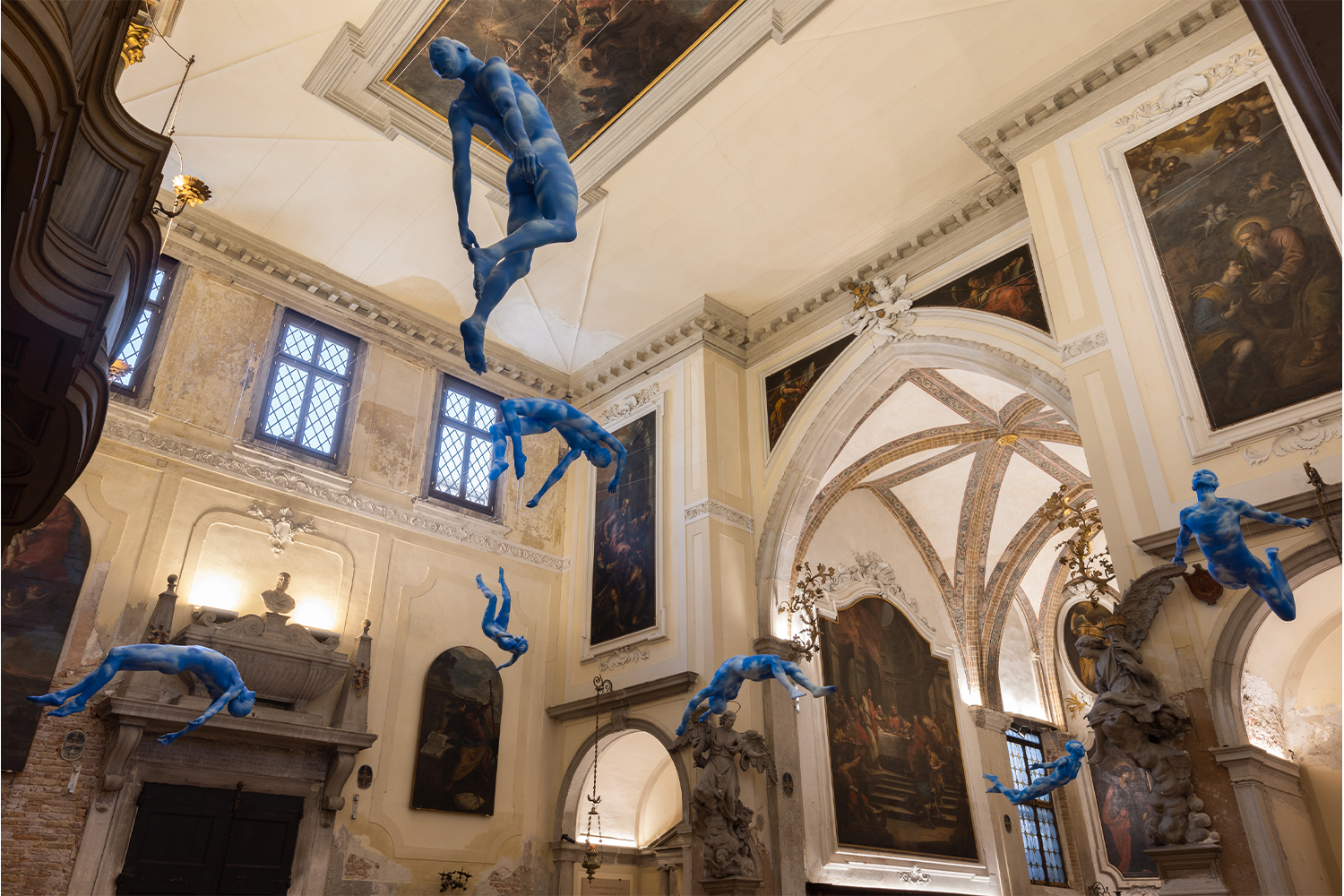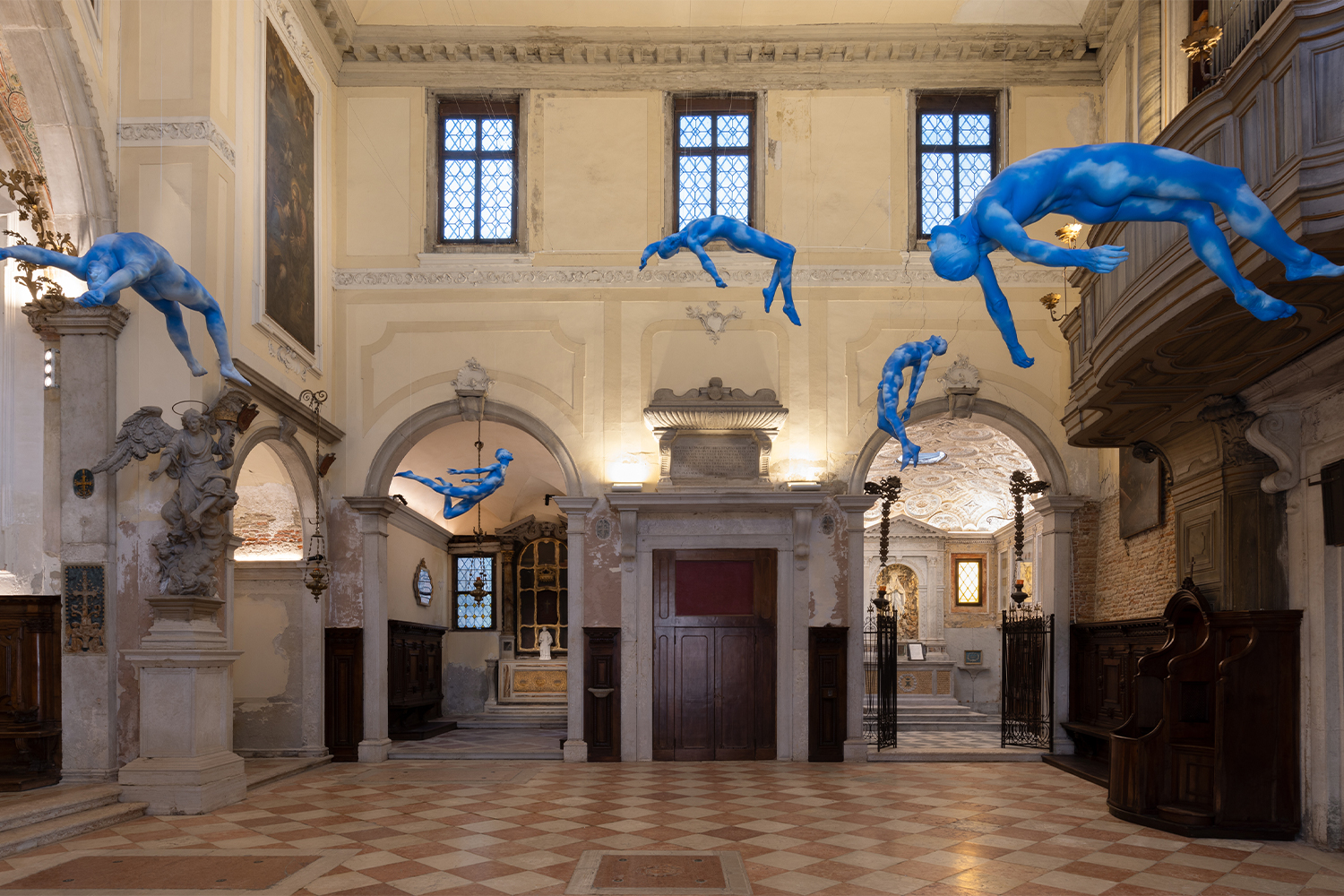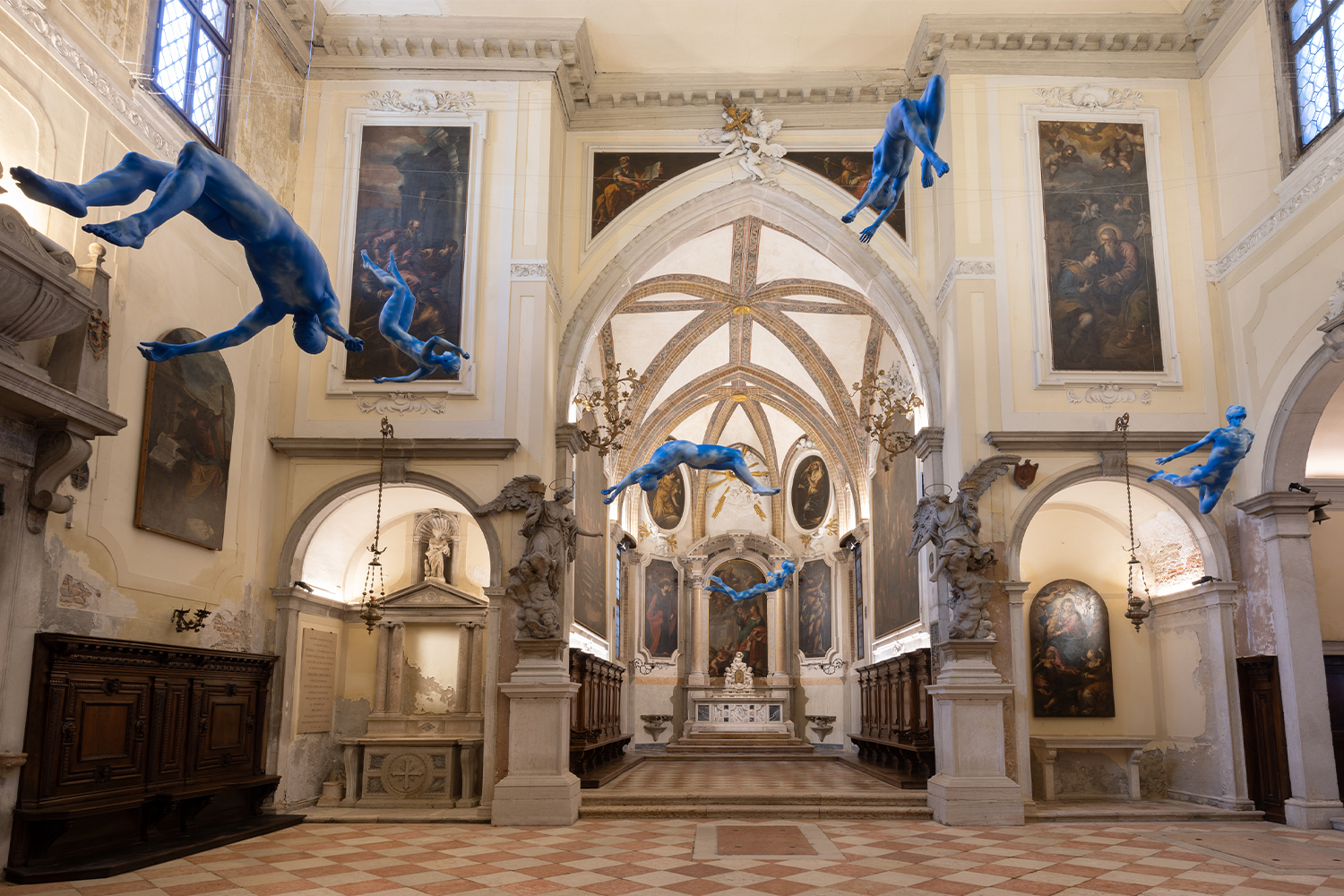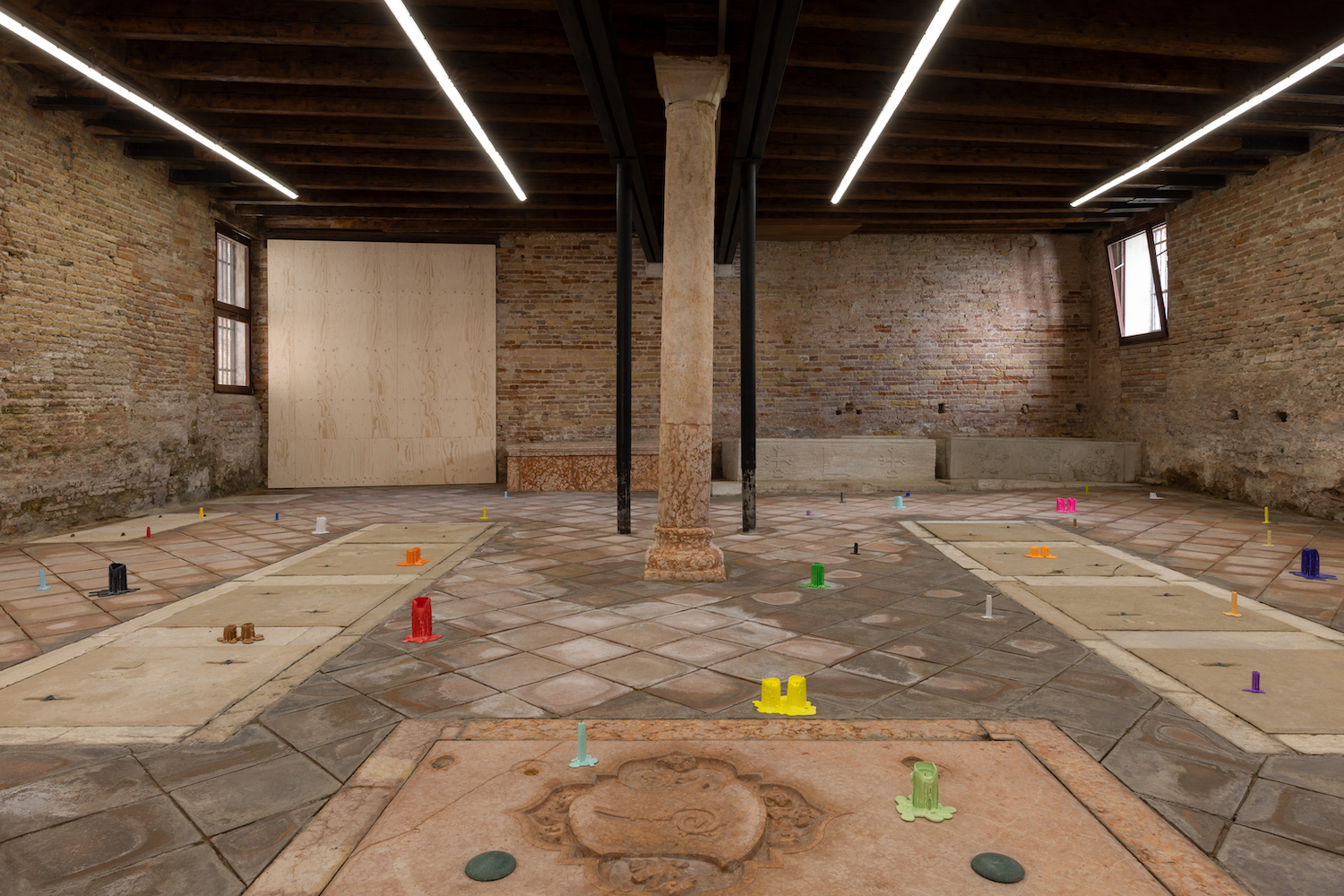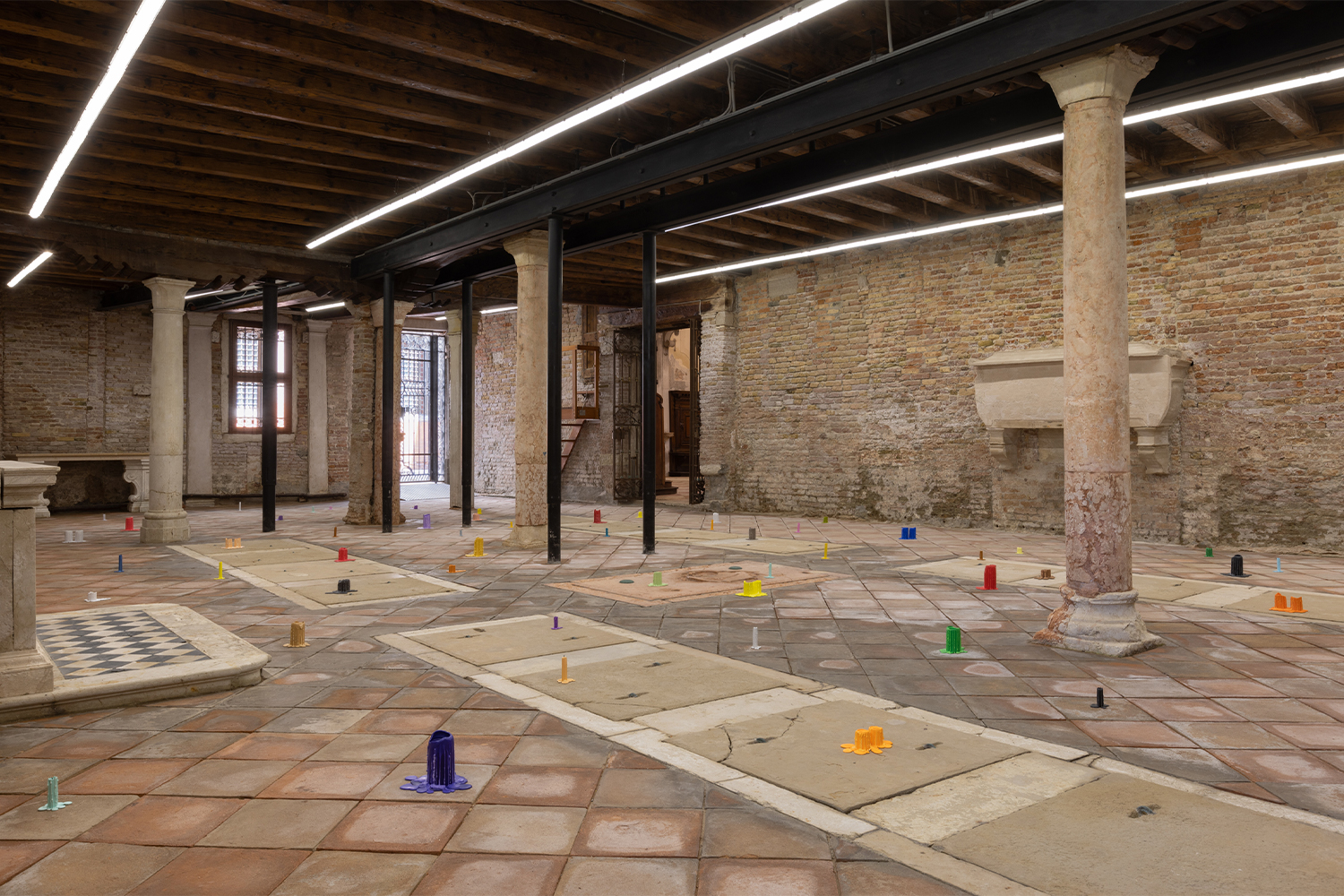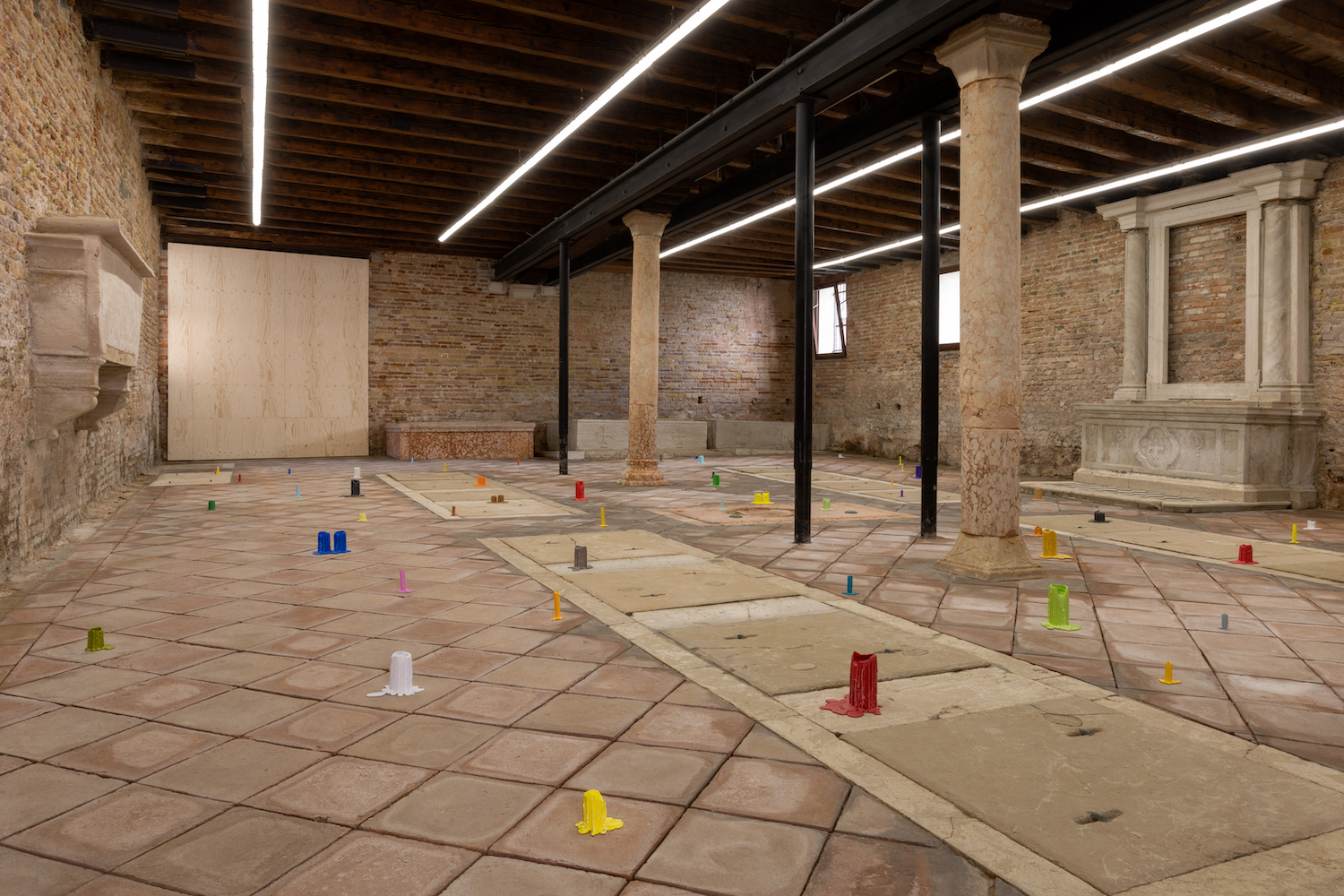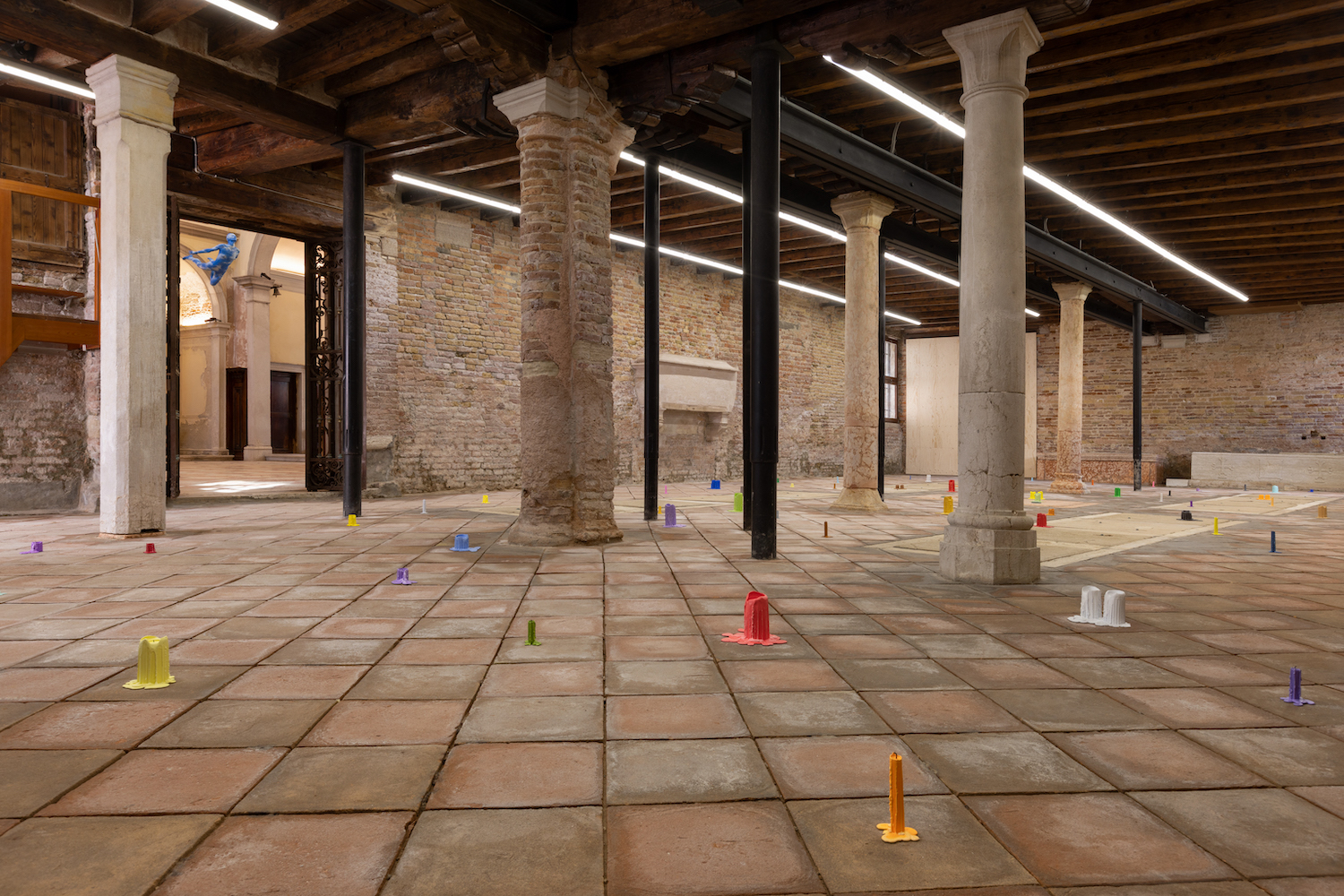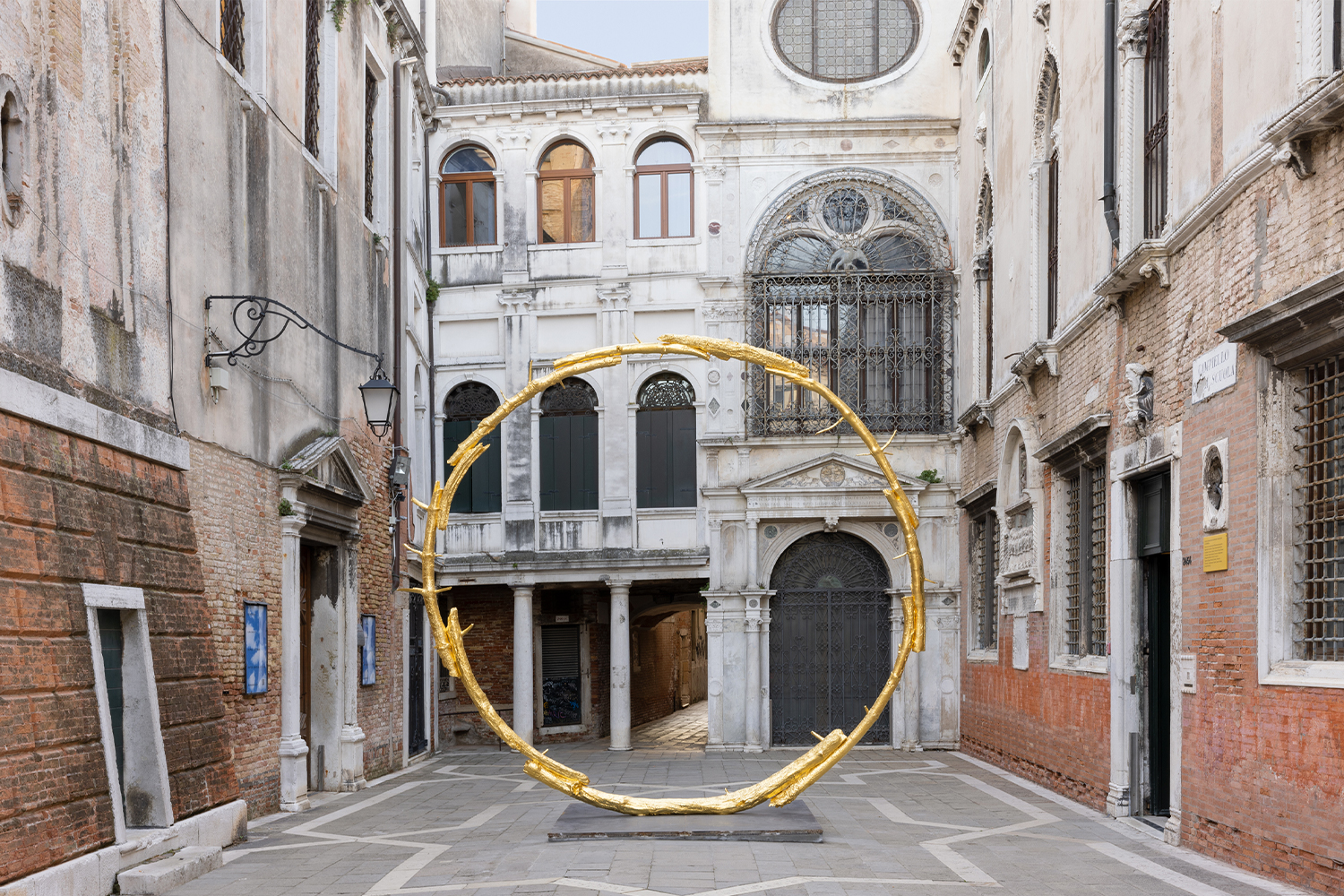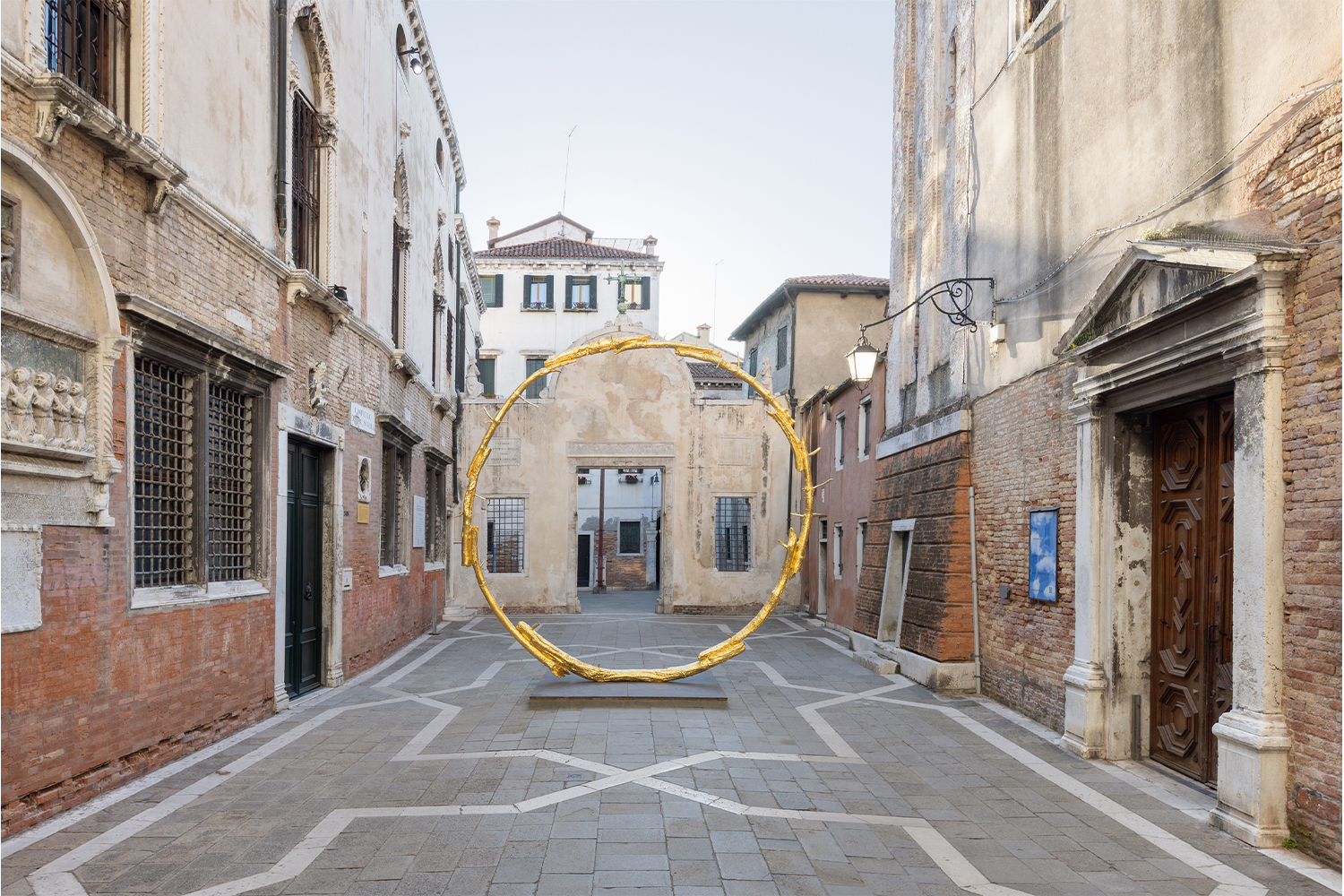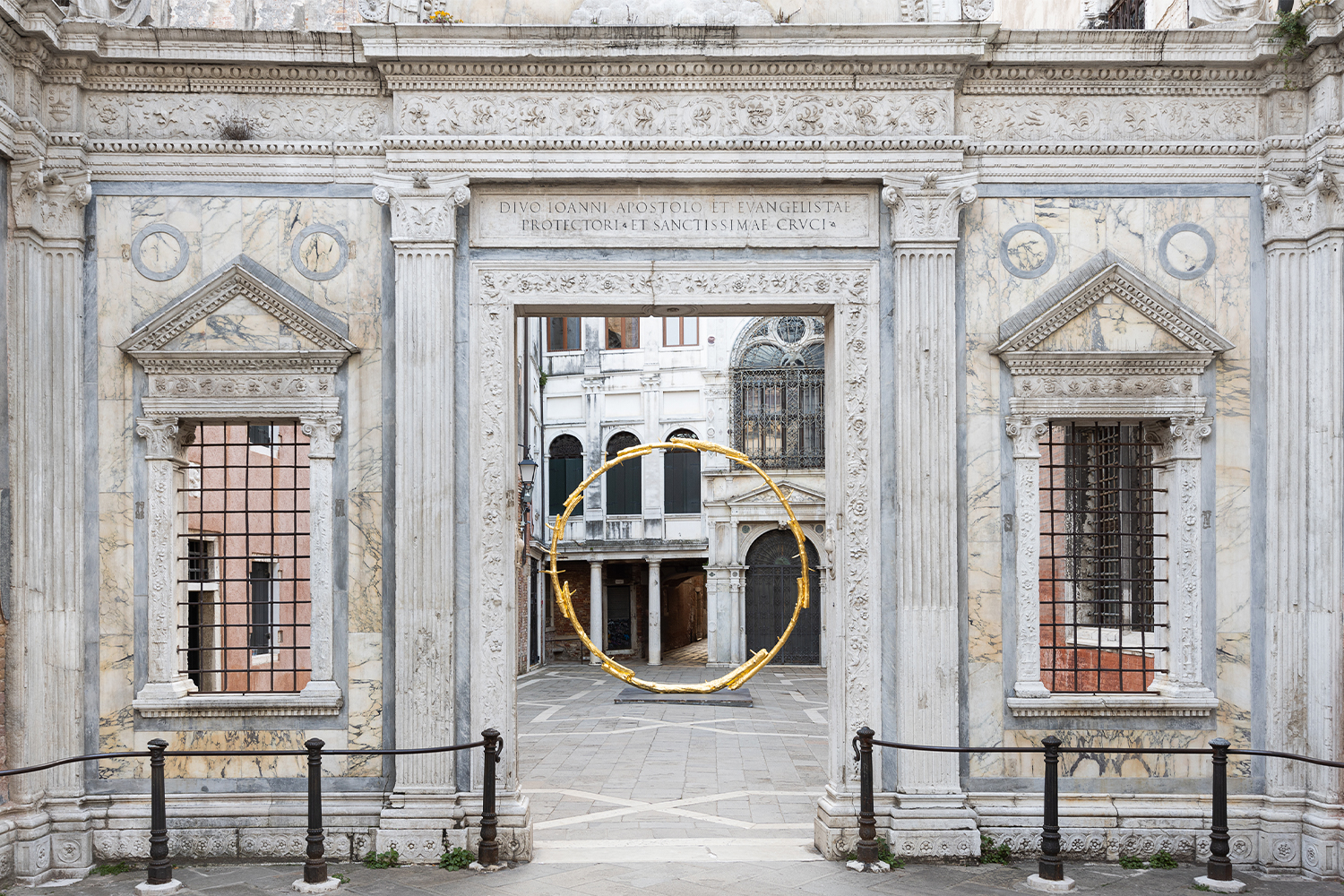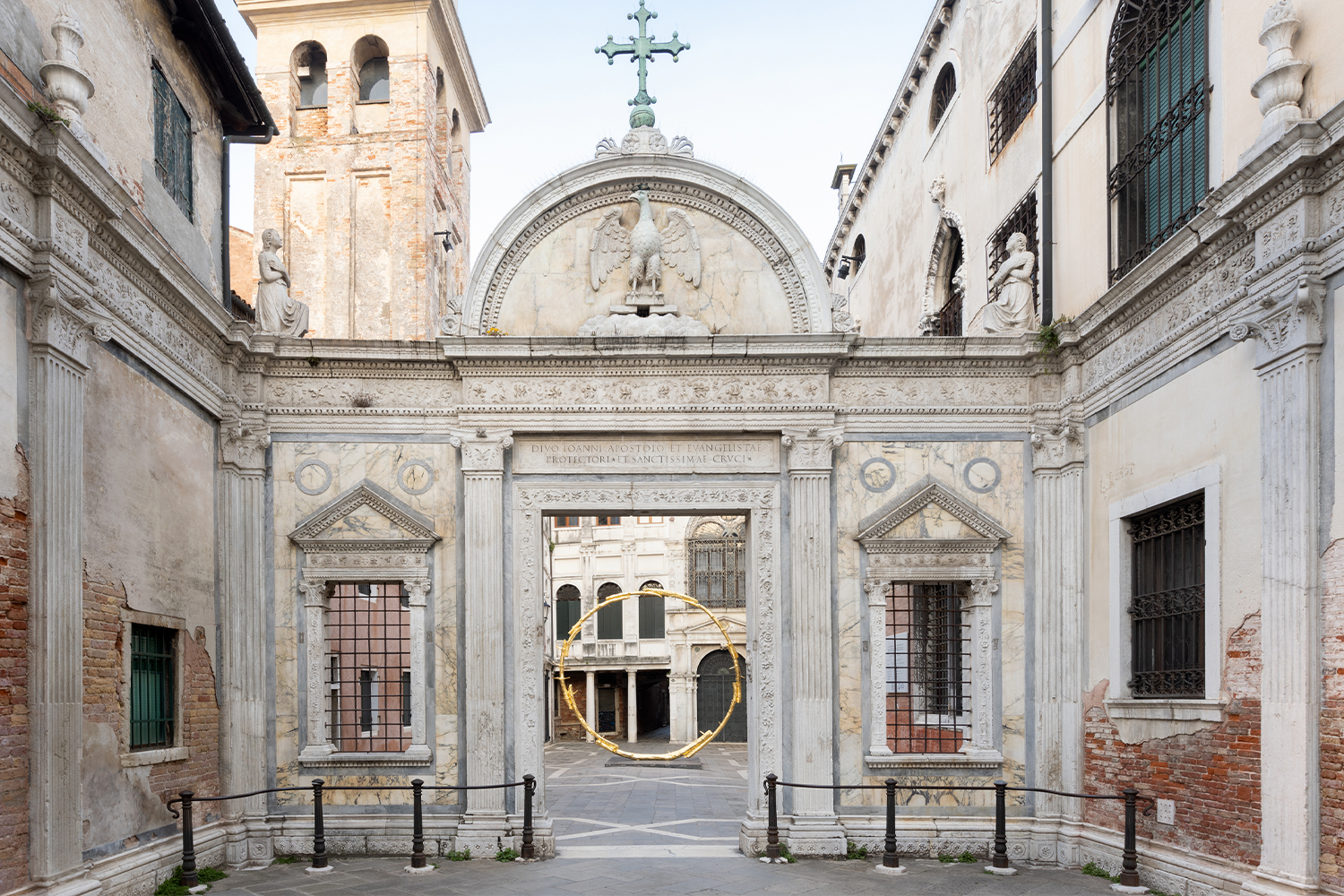When thinking about Ugo Rondinone’s work, one will inevitably recall “Ugo Rondinone: I ♥ John Giorno” (Palais de Tokyo, Paris, October 2015–January 2016), the unforgettable exhibition he conceived a few years before the death of his partner John Giorno (1936–2019). From a formal point of view, “burn shine fly” stands radically apart from that show, but it is also fraught with references to it. First of all, its title alludes to one of Giorno’s most important collections of texts, You Got to Burn to Shine (1992), which provides a structuring reference to the Palais de Tokyo exhibition. This collection, prefaced by William S. Burroughs, distills several decades of poems originating in the “AIDS years,” and includes autobiographical notes chronicling the New York underground avant-garde, particularly surrounding Warhol — Giorno was his lover and also the star of his first film, Sleep (1964) — and a series of texts addressing Buddhist and symbolic interpretations of death. The reprising of this book was thus effected via the reiteration of several textual elements, the integration of Giorno’s reflections on the medium, a twin reference to Warhol, and a direct quotation of its title that provided subject matter for pictorial and graphic works.
As if haunted by this set of references and still mourning the loss of his partner, Rondinone seems to have dedicated “burn shine fly” to Giorno. Thus, this strongly symbolic exhibition seems to embody Giorno’s poems and notes in three-dimensional space. Behind its figurative aspect, it conveys a strong reflection on the medium, and partakes in the return of the oneiric, the figurative, and the symbolic, as espoused by curator Cecilia Alemani’s “The Milk of Dreams” at the 59th Venice Biennale, running concurrently with Rondinone’s exhibition at the Scuola Grande di San Giovanni Evangelista.
By an effect of perspective, The Sun II (2018, “shine”), a quasi-circle of gilt bronze five meters in diameter, made up of thin branches from a thorny tree assembled and then cast, fits into the vertical spaces of the fifteenth-century openings at the front of this historical ensemble, and stands in a homothetic relationship to the building’s architectural motifs. As a reference to the sun and its radiance, a source of life (shine) or of death (burn), The Sun II seems to mark the gateway or passage to an oneiric, metaphysical dimension. Its form, which evokes a ring or a link, conjures up the symbol of the serpent Ouroboros eating its own tail, a metaphor for the cycle of the seasons, for life and death and infinity, but also the crown of thorns. By representing one of the essential materials in the history of sculpture, wood, which is also the material of the maquettes that preceded the gilt bronze of the definitive works, as was revealed by its first iteration, created to be shown in the gardens of the Château de Versailles, The Sun II effects a transversal reflection on the medium of sculpture, from its earliest spiritual and temporal instances to the iconic three-dimensional works of Arte Povera, as suggested by the branch motif and the work’s formal simplicity.
Crossing this threshold leads us to Human Clouds (2022, “fly”), a figurative installation with a dreamlike dimension, composed of seven human-scale anthropomorphic polyurethane sculptures painted with clouds on a sky-blue background, representing naked men with dancers’ bodies who seem to be floating in the air or performing weightless acrobatics. Symbols of dreaming and eternity, and of the dissolution of the weight of the human condition within death, their positions evoke the Icarian dream of being gravity-free and flying through the air. Some of them seem to depict the Fall and to evoke Dante’s Inferno, as often illustrated by Signorelli’s fresco The Damned Cast into Hell (Chapel of San Brizio, Orvieto Cathedral, Italy). Hanging in the church of the Scuola Grande, juxtaposed with seventeenth- and eighteenth-century paintings on religious subjects, Human Clouds evokes the symbolism of life after death and, indirectly, the image that appears on the cover of Giorno’s collection, a winged figure from Buddhist mythology in front of a black sun.
The title, the appearance of floating, and the way the work is hung also evoke Warhol’s Silver Clouds (1966), which he presented as an anti-painting: “I don’t paint any more. […] Painting was just a phase I went through. But I’m doing some floating sculpture now: silver rectangles that I blow up and that float.” In depicting the sky from the backgrounds of those figures in the church on actual three-dimensional human figures, recalling the use of this motif in certain works by the Surrealist painter René Magritte, Rondinone seems here to be re-examining the medium of painting and creating a new, reinvented form of pictoriality.
Referring to Human Clouds, Rondinone explains that the installation was produced from casts of dancers in contemplative postures, echoing a video in progress in which eighteen dancers move around a fire in the desert, from sunrise to sunset, in an allusion “to the Greek myth of the immortal Phoenix which is constantly being reborn from its ashes, purified by fire.” In this way he makes it the symbol of eternity: “the flying body-clouds mark the end of a trilogy where the human body merges with the natural elements: soil, fire, water, and air.”
As a counterpoint and in opposition to the previous work, a set of eighty sculptures, still.life (candles) (2013, “burn”), is spread over the floor of the Badoer family crypt. These works in bronze, each painted a different color and with their interior made of lead, represent candles, to scale, consumed to varying degrees. As if stuck to the floor by inertia and the heaviness of lead, they echo the meaning of vanitas paintings in which burning candles represent the ephemeral nature of the human condition. In transposing this symbol from two to three dimensions, Rondinone is extending his meditation on artistic media and reexamining their limits.
This return to the demonstrative materiality of the artwork, found everywhere in Venice, marks a turning point in the field of contemporary art and attests a return to the figurative, even if, as in Surrealist art, or more recent works by Charles Ray and others, the dimension of critical reflection is never excluded.
(Translated from French by Charles Penswarden)


